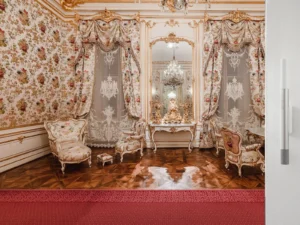Schönbrunn Palace, located in Vienna, Austria, is a historic royal residence known for its stunning architecture and expansive gardens. As one of the most visited tourist attractions in Austria, it offers visitors a glimpse into the country’s imperial past. The palace, surrounded by beautifully landscaped gardens, is a UNESCO World Heritage Site and a must-see destination for travelers exploring Vienna.

Artifacts like paintings, sculptures, textiles, and other antiquities often date back hundreds of years. Preserving them requires maintaining optimal humidity levels to prevent moisture-related issues like mold, distortion, or decay. This also applies to precious books, ancient manuscripts, and other irreplaceable written materials. Therefore, monitoring temperature and humidity serves as an investment in safeguarding the cultural heritage housed within museums for future generations.
Challenges
- Historical preservation constraints
- Compatibility with heritage infrastructure
- Data privacy and security
- Visitor experience considerations
Solution
As part of this research-oriented project, a network consisting of more than 200 microclimate sensors (SMC30), was implemented. By maintaining stable environmental conditions, Palace preservation personnel can fulfill their responsibility to preserve and protect cultural treasures for future generations to enjoy.
Benefits
- Damage prevention of Artifacts
- Increasing health safety of visitors and staff
- Reduced time for the experts
